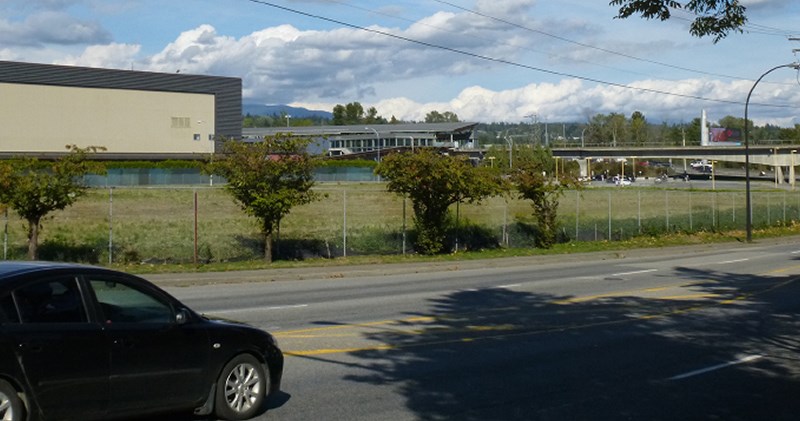A proposed large-scale redevelopment plan in New Westminster is drawing fire from Coquitlam councillors, who say it would create more gridlock in a heavily congested area at the border between the two cities.
Sapperton Green, a planned Bentall Kennedy development, would see approximately 3,700 units of housing and between 750,000 and 1.5 million sq. ft. of office space around the Braid Street SkyTrain station. It also proposes putting 150,000 sq. ft. of retail space in the area.
“There are tremendous problems with traffic getting over the Brunette overpass into New West,” said Coun. Brent Asmundson, who is a bus driver with Coast Mountain Bus Company. “To see what they are doing here… it’s a concern for regional transportation.”
A Coquitlam staff report said road access through the area is already constrained and more traffic could make it an issue for residents and ambulances trying to get to Royal Columbian Hospital.
The city is asking New Westminster to hold off on moving forward with an official community plan amendment that would allow the development to go through.
Coquitlam has sent letters to New West council, the Ministry of Transportation and Infrastructure, TransLink and the Ministry of Health expressing its concerns.
Mayor Richard Stewart said New Westminster is making decisions based on its own borders, not what is good for the region.
“If 22 municipalities do that, we will not be a livable region,” he said. “Metro Vancouver will not work.”
Tensions around Braid Street and the Brunette interchange have long existed between New Westminster and Coquitlam, with New West resisting initiatives that it believes would funnel more traffic through its municipality.
The two cities battled for years over the future of the Bailey bridge, a single-lane span across the Brunette River that was recently replaced with two bridges.
But New Westminster Mayor Jonathan Cote said he is open to working with Coquitlam staff and council in finding a solution to the traffic issues around Braid Street.
“Coquitlam and New Westminster, if we are on the same page, there is an opportunity here,” he said.
Putting high-density developments around SkyTrain stations has been the norm across the region, Cote added, noting that the warehouses and unoccupied space in Braid Street don’t allow the city to maximize access to public transit.
“It is not very realistic that a significant portion of land around a rapid transit station remain under-utilized or, in many cases, vacant,” he said. “It is an area the region has designated for growth.”
He noted that the Brunette overpass is the only interchange that was not upgraded during the Gateway Program’s expansion of the freeway and the replacement of the Port Mann Bridge. The province, Cote said, must step up to the plate if the traffic issues in that area are going to be improved.
“I think from a road perspective, I think the answer could lie in the Brunette interchange,” he said. “If there is an opportunity to shift the interchange, or create an alternate interchange, we could find an alternate route.”
HAVE A SAY ON LARGER HOMES
Coquitlam residents will get a chance to weigh in on changes to the city’s residential zoning bylaws as part of its effort to limit the proliferation of large homes.
Residents, particularly in the older southwest portion of the city, have complained over the last few years that new homes are too large and do not fit the character of their neighbourhoods.
The city initiated a public input session last spring and based on some of the input made several tweaks to the municipality’s zoning bylaw over the summer. Those changes are expected to come before council at a public hearing later this month, giving residents the chance to comment on the amendments.
On July 20, three options were presented to 44 residents at a public input session, with 45.4% supporting fine-tuning the zoning rules, 27.3% supporting reducing density and 11.4% maintaining the status quo.



